Carrots are one of my pantry stables in my pantry stocking garden! I grow them every year, but each year brings different challenges, results, and successes. Sometimes my carrots grow after the first sowing, sometimes it takes more sowing rounds and more fertilizer. Carrots can be finicky to germinate and grow, but if you do not give up, a beautiful harvest of large orange vegetables will await you.
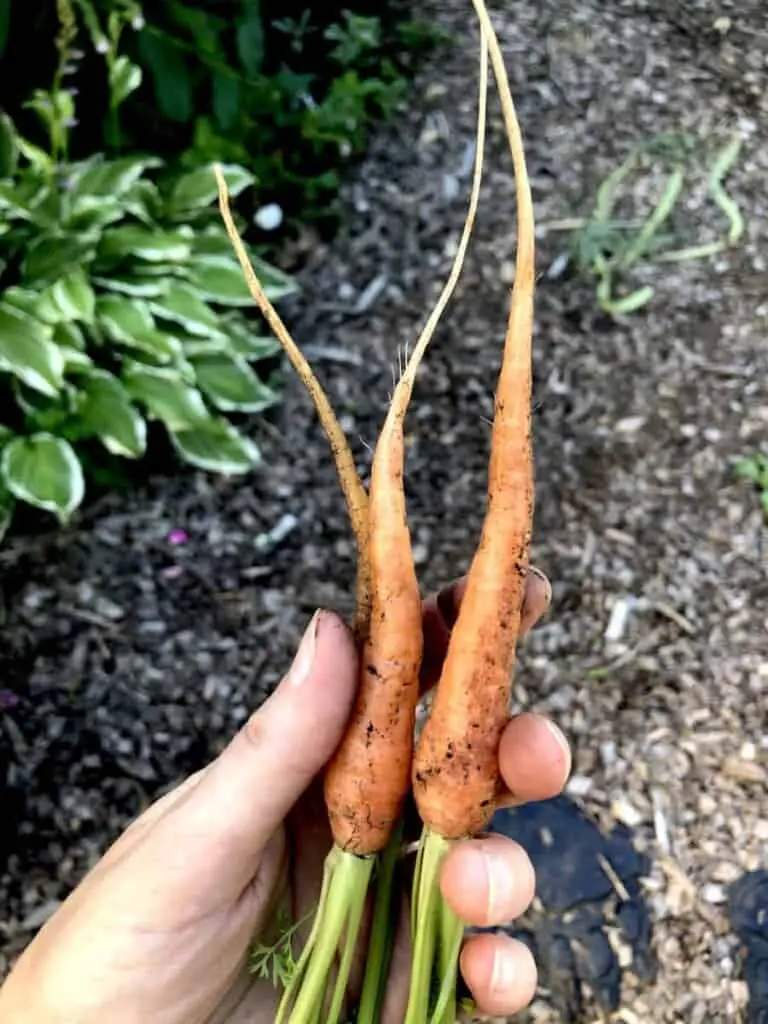
- Carrots are cold-hardy vegetables and like moist, light sandy soil with cooler temperatures
- Carrots are best sowed when the temperatures reach about 40F
- Remember that carrots can be finicky when it comes to germination. If you fail the first couple of times, try again and ensure the soil is well-prepared before sowing
- Maintain cool and moist soil, beginning and middle of the spring is the best time to sow carrots seeds
- Amend the soil before sowing carrot seeds
- Keep the soil moist but do not let it dry out as this will slow or eliminate germination
- Fertilize at least twice during the growing process
- Harvest carrots when the carrots grow white, thin hairy roots, it is a sign the carrots are mature and ready to be harvested
When to sow carrots
Sow carrot seeds beginning of the middle of the spring. As carrots are cold-weather crops, they like cool, moist, loose, and fertile soil. Sow carrots when temperatures reach about 40F. Sow the carrot seeds in shallow holes or a shallow trench about 1/4 inch deep and cover them with soil. Water well.
In my zone 6 I like to sow carrots end of March or begging of April as the soil allows. If the soil is thawed and the daytime temperatures are about 40F it is a good time to sow carrot seeds.
How to prepare the soil to grow carrots
The best is to start preparing the soil in autumn when there is an abundance of grass clippings and leaves. Add the grass clippings and shredded leaves to the garden bed in autumn. These will turn into organic matter over the winter. In spring, amend the soil before sowing the seeds with bone meal, compost, Azomite rock dust, and wood ash. At sowing, add organic fertilizer. Ensure the soil is loose as carrots are a root crop and like loose soil to be able to grow deep and wide. During the growing season fertilize twice with a fish fertilizer.
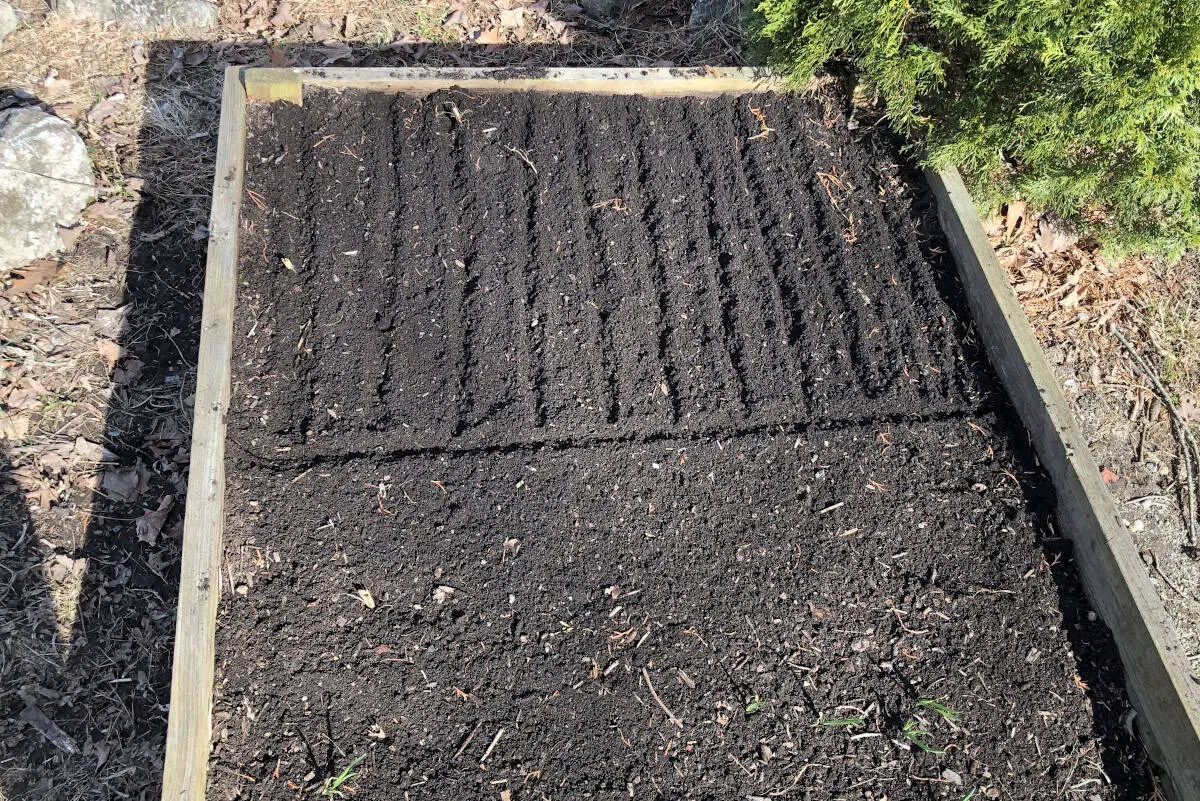
Organic fertilizer Down to Earth bio live fertilizer mix can be added to the soil as you sow the seeds. Get Azomite rock dust here. Both, the rock dust and the fertilizer mix can be used for all vegetables and will go a long way while gardening.
How to space carrot seeds
At sowing, space the carrot seeds about 2 inches apart. If single sowing, sow each seed with 2-inch spacing. If sowing seeds close to each other, let the carrots grow and thin them out by harvesting baby carrots. This is also thinning but harvesting baby carrots at the same time. Pull the largest ones of the bunch by leaving about a 2-inch space in between the carrots so they have space to grow and fully mature.
Get rainbow carrot seeds here!
How to prevent carrot seeds from being eaten
After you sow the seeds, cover the freshly sowed rows with cardboard and a rock on top of it. Or you can opt to cover them with garden mesh or frost cover. If the seeds remain uncovered, it is highly probable that birds or rodents will eat them and your work will be ruined. Once the seeds have sprouted, it is safe for them to be uncovered.
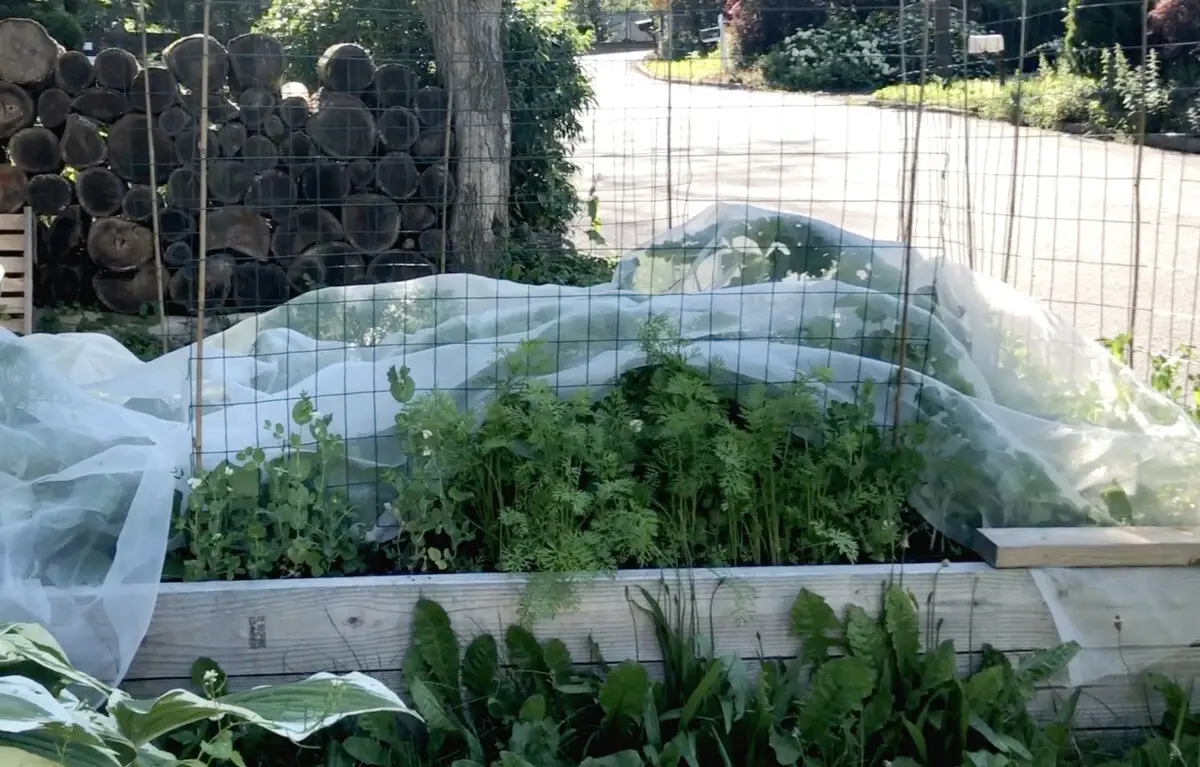
I always cover my seeds for multiple reasons. After I sow carrot seeds, I cover them with a lightweight frost cover if I sow them when cold weather is still prevailing. The frost cover will keep the soil moist, and warmer and prevent the birds and other pests from eating the seeds.
Once the seeds sprout, I change my frost cover for a garden mesh. Since we have wild rabbits, they can jump inside my raised garden beds and eat it all up. I keep my carrots covered with a garden mesh till they mature and I harvest them. I use hoops to keep my mesh cover elevated to provide healthy growth for the carrot tops.
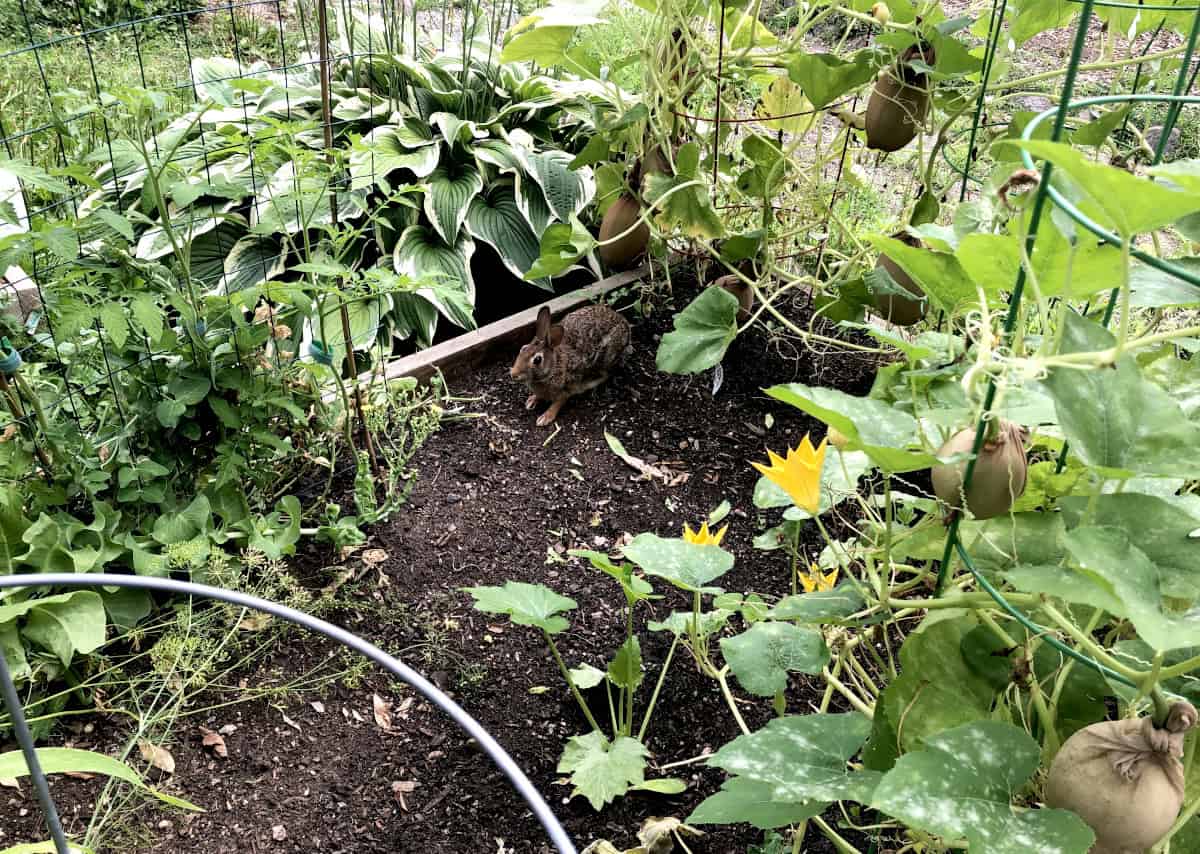
Depending on the soil and weather conditions sometimes carrot seeds do not germinate well. There are many gardeners that struggle growing carrots. Each home gardener has that one or two veggie we struggle with. For some, it might be carrots. They might be a challenge.
Last year I sowed carrot seeds in a container, but unfortunately, that spring was so wet I lost all the seeds, they did not even sprout. I assumed they probably drowned and rotted in the wet soil. I learned that while carrots like moist soil, they do not tolerate constantly wet soil. I should have moved them under some covering.
I also remember that first years of gardening I struggled growing carrots. I struggled to germinate them and once they germinated, they grew only into tiny ones and never reached the full size.
Then after a couple of years, after I kept amending the soil I sowed them again, and they just grew on their own. I sowed them between cabbages just to try them out. And it was a success. I had beautiful large carrots and was very happy that I was finally able to grow them to full maturity.
This year, I am growing cabbages too, and I will sow carrots there as well. Maybe it has something to do with the cabbages that my carrots grew so well. We shall see. But if something works, I just keep on repeating it.
A GOOD READ: What vegetables need the least space?
What are common carrot pests?
Some of the most common carrot pests are aphids, carrot rust flies, carrot weevils, cutworms, leafhoppers, root-know nematodes, and wireworms. Although it sounds like carrots have many pests, it really depends on the area, climate, and the soil in the area if you even get any carrot pests. Most of them can be prevented by a simple hoop mesh cover over the carrots. Cover your carrot as soon as you sow the seeds and let them grow and mature under the cover to prevent pests from reaching the crop.
As I said above, I always keep my carrots covered to save the seeds from being eaten and then prevent carrot tops from being eaten by wild rabbits. Thus, I do not have any pests to fight as nothing can get even close to my carrots.
If you already have some pests in your carrot crop you can spray with B.T. or Bacillus Thuringiensis which is an organic pest control spray. This one is safe for earthworms and bees but it kills pests like caterpillars, worm-type insects, moths, and more.
When to harvest carrots
Follow the seed packaging instructions which tell you how many days the particular variety needs from seed to harvest. Depending on growing conditions, weather, and zone carrots might need even additional 30 days to fully mature. Pull one carrot to see if they are mature. If the carrot has very thin white hairy roots growing out of it, is a sign of a fully mature carrot, and your carrot patch is ready to be harvested.
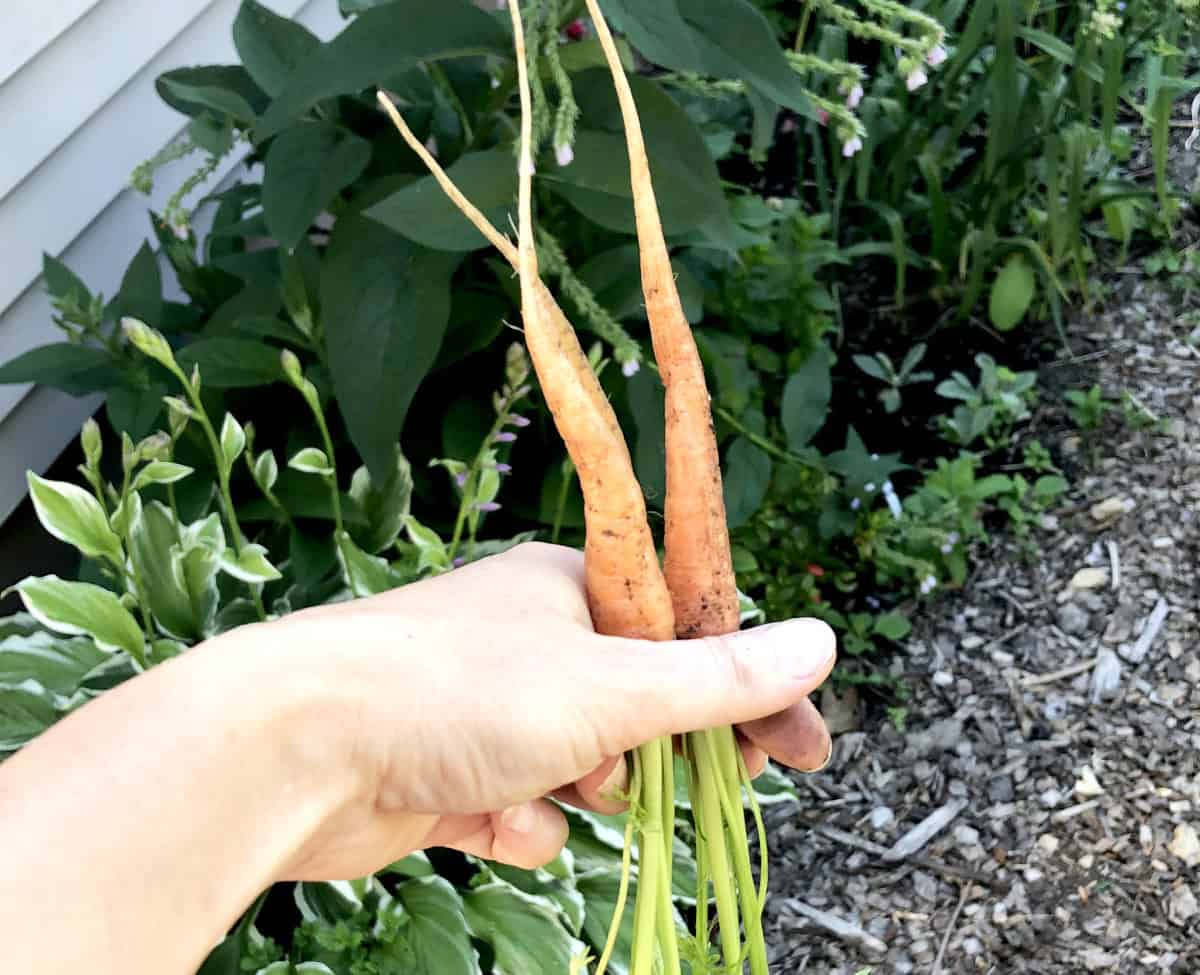
I never thin out my seeds. I just cannot get over the fact that each thinned seed means harvest is thrown out. I sow carrots in rows with seeds sprinkling lightly. Then as the carrots grow, I pull baby-size carrots to thin them out about 2 inches apart. This way, I do not lose seeds, I have delicious, sweet, and juicy baby carrots and still plenty of mature carrots at harvest time.
I also noticed, almost all my vegetables are never ready at the time the packet information says they should be. I always give them about full 30 days more than what the packaging says. While for some it might take 50 days, I harvest about 30 days later.
Always do what is best for your growing zone, weather, and soil you are working with. Take the growing information only as a guide, but do not feel obligated to keep it to the tea as each’s garden’s situation is individual and different.
Share with us, what vegetable is a struggle for you to grow and why. And if you have any favorite carrot variety, please mention it so we can be inspired too.
Tips for growing in 5–gallon buckets

